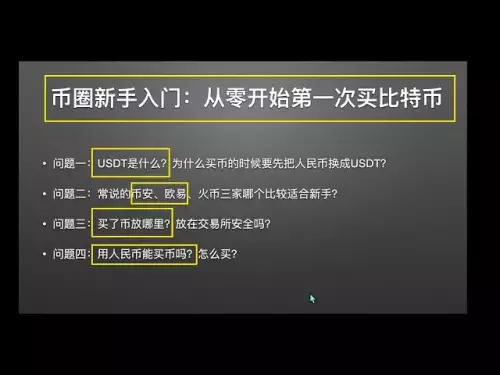 |
|
 |
|
 |
|
 |
|
 |
|
 |
|
 |
|
 |
|
 |
|
 |
|
 |
|
 |
|
 |
|
 |
|
 |
|
Cryptocurrency News Articles
Deciphering Bitcoin Halvings: Impact and Predictive Model Quest
Apr 08, 2024 at 11:45 am
Bitcoin halving, a pivotal event in the cryptocurrency sphere, sparks the pursuit for reliable predictive models. Historical halvings have significantly impacted Bitcoin's price, creating a potential imbalance between supply and demand. This article delves into the intricacies of Bitcoin halving and its implications, exploring the impact on price fluctuations and the ongoing search for accurate forecasting methods.

Bitcoin Halving: Deciphering Its Impact and the Quest for Predictive Models
Introduction
Bitcoin's halving events, characterized by a periodic reduction in the issuance rate of new bitcoins, have emerged as pivotal catalysts in the cryptocurrency's price trajectory. This article aims to unravel the historical impact of halving events on Bitcoin's market dynamics and explore the ongoing pursuit of reliable predictive models to navigate the complexities of this digital asset.
Halving's Impact on Bitcoin's Price
The halving of Bitcoin's block reward has a profound effect on its price, introducing a fundamental shift in the supply-demand dynamics of the cryptocurrency. By reducing the influx of new bitcoins into the market, halving events can create an imbalance, favoring demand over supply. This imbalance often manifests as price volatility, with analysts suggesting a correlation between halving events and Bitcoin's long-term price trends.
Empirical evidence corroborates the notion of a direct impact of halving events on Bitcoin's price. Following the first halving in November 2012, the price surged from approximately $11 to over $1000 within a year. A similar pattern emerged after the second halving in July 2016, with Bitcoin's price embarking on a significant uptrend, culminating in an all-time high of nearly $20,000 in December 2017.
The most recent halving event in May 2020 sparked intense scrutiny among investors and analysts. In the lead-up to the halving, speculation abounded regarding its potential market impact. Some analysts anticipated a substantial price increase, while others projected a more tempered response.
In the months following the 2020 halving, Bitcoin's price exhibited a bullish trajectory, reaching new highs and attracting increased institutional interest. This price rally was largely attributed to the reduced supply of new bitcoins, coupled with heightened demand from investors seeking exposure to the cryptocurrency.
However, it is crucial to note that not all halving events have triggered immediate price surges. In some instances, Bitcoin's price has experienced short-term volatility or even a decline following a halving event. This underscores the intricate and often unpredictable nature of the cryptocurrency market.
Predictive Models in Bitcoin Analysis
Predictive models play a vital role in analyzing and forecasting Bitcoin's price movements. By leveraging historical data, market trends, and various other factors, these models attempt to project future price trajectories.
One of the most widely used predictive models in Bitcoin analysis is the Stock-to-Flow (S2F) model. This model calculates Bitcoin's scarcity by comparing its existing supply (stock) to the rate at which new bitcoins are entering the market (flow).
Another popular model is the Relative Strength Index (RSI). This technical analysis tool measures the speed and magnitude of Bitcoin's price changes. The RSI is often used to identify overbought or oversold conditions in the market, providing insights for traders to make informed decisions on buying or selling.
Machine learning algorithms are also gaining prominence in Bitcoin analysis. These algorithms analyze vast amounts of data to identify patterns and trends that may be imperceptible to human analysts. However, machine learning models are often complex and computationally intensive, requiring substantial resources for training and deployment.
Limitations of Predictive Models
Despite their potential, predictive models in Bitcoin analysis are not without limitations. The inherent volatility of the cryptocurrency market poses a significant challenge for accurate price forecasting. Additionally, many predictive models rely on historical data, which may not always be an accurate indicator of future trends.
As the Bitcoin market continues to evolve, new predictive models will likely emerge. These models must be adaptable and responsive to changing market conditions to provide reliable and accurate forecasts. Nevertheless, predictive models remain invaluable tools for investors and analysts seeking to navigate the complexities of Bitcoin trading.
Conclusion
Bitcoin's halving events have played a pivotal role in shaping its price dynamics. While past halving events provide valuable insights, the future remains uncertain. The pursuit of predictive models is an ongoing endeavor, as investors and analysts seek to unravel the intricate factors that influence Bitcoin's price movements.
It is important to emphasize that this article is for informational purposes only and does not constitute financial advice. Investors should conduct their own due diligence and consult with qualified professionals before making any investment decisions.
Disclaimer:info@kdj.com
The information provided is not trading advice. kdj.com does not assume any responsibility for any investments made based on the information provided in this article. Cryptocurrencies are highly volatile and it is highly recommended that you invest with caution after thorough research!
If you believe that the content used on this website infringes your copyright, please contact us immediately (info@kdj.com) and we will delete it promptly.






























































